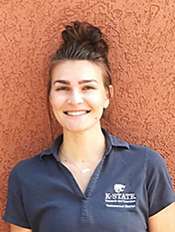
June is the time to fertilize warm-season lawn grasses such as bermudagrass, buffalograss, and zoysiagrass. These species all thrive in warmer summer weather, so this is the time they respond best to fertilization. The most important nutrient is nitrogen (N), and these three species need it in varying amounts.
Bermudagrass requires the most nitrogen. High-quality Bermuda stands need about 4 lbs. nitrogen per 1,000 sq. ft. during the season (low maintenance areas can get by on 2 lbs.). Apply this as four separate applications, about 4 weeks apart, of 1 lb. N per 1,000 sq. ft. starting in early May. It is already too late for the May application, but the June application is just around the corner. The nitrogen can come from either a quick- or slow-release source. So any lawn fertilizer will work.
Plan the last application no later than August 15. This helps ensure the bermudagrass is not overstimulated, making it susceptible to winter kill.
Zoysiagrass grows more slowly than bermudagrass and is prone to develop thatch. Consequently, it does not need as much nitrogen. In fact, too much is worse than too little. One and one-half to 2 pounds N per 1,000 sq. ft. during the season is sufficient. Split the total in two and apply once in early June and again around mid-July.
Slow-release nitrogen is preferable but quick-release is acceptable. Slow-release nitrogen is sometimes listed as “slowly available” or “water insoluble.”Buffalograss requires the least nitrogen of all lawn species commonly grown in Kansas. It will survive and persist with no supplemental nitrogen but giving it one lb. N per 1,000 sq. ft. will improve color and density.
This application should be made in early June. For a little darker color, fertilize it as described for zoysiagrass in the previous paragraph, but do not apply more than a total of 2 lb. N per 1,000 sq. ft. in one season. As with zoysia, slow-release nitrogen is preferable, but fast-release is also OK. As for all turfgrasses, phosphorus and potassium are best applied according to soil test results because many soils already have adequate amounts of these nutrients for turfgrass growth. If you need to apply phosphorus or potassium, it is best to core aerate beforehand to ensure the nutrients reach the roots.
Lauren Fick is the Horticulture Extension Agent for the Cottonwood Extension District. If you have questions, she can be contacted by e-mail at [email protected] or by phone at 785-628-9430 or 620-793-1910.






